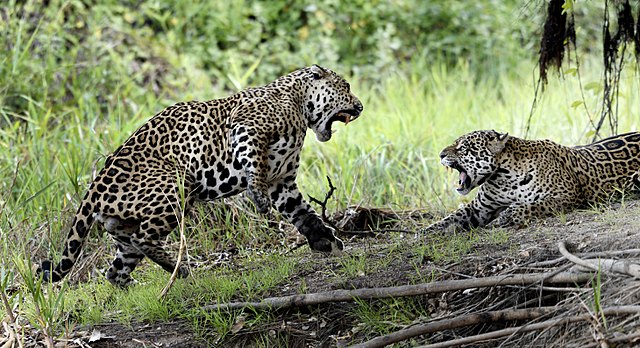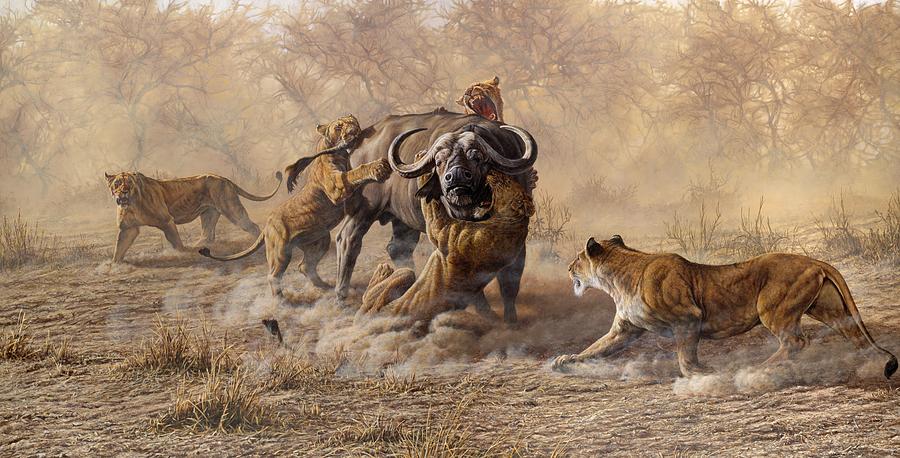Phylum:___Chordata
Class:______Mammalia
Order:_____Carnivora
Family:_____Felidae
Species:____37
Native to every continent except Australia and Antarctica, cats are some of the most successful predators on the planet. These predators are equipped with highly tuned senses and each carries an arsenal of sharp teeth, claws, and reflexes. While some variants have patterning and sizes that are different than others, cats are unique as a group because the differences between species are very small. As a group, all but the largest of cats tend to be excellent climbers with some being exceled in traveling through water. Most species are typically loners; however, some species are known to congregate together for periods of time even outside of the mating season. There are thirty-seven known species of cats, of which tend to habit a large variety of environments.

“Cat Fights”
All species of cat are territorial towards others of their own kind and other predators. To prevent conflict, cats typically mark their territory with strong scented urine and feces or even scratching on surfaces that are on commonly used trails. Should one ignore the markings, vocalization and physical stance is used–ears pressed against head, dilated pupils and exposed teeth, muscles typically flexed to appear larger, and growling/hissing occuring. The image provided above represents two Jaguars showing such signs of aggression toward one another.
Anatomy
All cats have a spherical shaped head and a smaller snout than many in the carnivora order; however, being capable of producing a large gape with powerful muscles in the skull. These features in the head of a cat allows it to to deliver a strong bite which is assisted in gripping and stabbing their victim by the presence of large canines. The carnassial teeth, those found directly behind the cheeks that cut through bone and tendon, have evolved to become very developed.

Cats typically have a softer, sometimes described as “fluffy”, coats of fur that typically range in patterns of spots or stripes stretching from the head to the tip of tail. There are five digits on the front limbs and four on the rear limbs, each given curved, sharp claws used to grapple onto prey. The majority of species are capable of retracting their claws to prevent from damaging them when not in use, but some like the Cheetah are not capable of retracting them. When in use (e.g. climbing or holding onto prey) the claws spring forward similar to that of a spring-loaded knife. Hair typically grows between the paw pads to better assist in silencing their walk as a cat stalks.
“Big Cat” vs. “Small Cat”
When hearing of the term “Big Cats” people tend to think about a number of physically big cats such as tigers, lions, leopards, and pumas. However, not every large cat is a “big cat.” There are several forms of classifications that occur between the two that act as generalized ways to tell them apart. However, the most accepted classification deals with the capability to roar.
In the larynx of a cat, there are vocal folds that are capable of stretching needed the lengthen to create the affect of a roar. The tissue used is made of thickened collagen and elastic fiber that increases when reaching the lining of the inner throat. When this large area “folds” it begins to create a very deep resonance causing vibrations in the throat causing high to low air resistance and thus producing a roar. The cats that have this capability are referred to as “big cats” which includes the Jaguar, the Leopard, the Lion, and the Tiger. There is an exception to this group: the Snow Leopard, which lacks the tissue needed to produce a roar. All other cats are deemed “small cats” even though some may rival the size of true “big cats.”
Senses
Cats have some of the best senses in the animal kingdom. Large, forward-facing eyes allow cats to pin down just how far an object may be in comparison to their locality. The pupils, which can vary in shape from slits to rounded depending on the species, can contract and expand greatly in order to be able to see in a variety of lighting. The ears are typically large, mobile, and shaped like a funnel in order to allow the optimal ability to hear potential prey and predators. The whiskers on cats are highly sensitive, capable of sending even the slightest impulse to the brain for a reaction.
The sense of smell is very powerful in felines. In the roof of the mouth is an organ known as the Jacobson’s organ which allows cats to “smell-taste” sexual odors from other cats. Secretions produced by glands on the cheeks, forehead, under the tail, and between the claws helps identify information such as the gender and the age of an individual.
Hunting Techniques
Each species of cat typically hunts in a different way. Some cats typically actively search out food while other prefer to lie in ambush and wait for their prey to come to them. The majority of cats use a combination of methods to hunt down prey. To help assist in these methods, cats are disguised in ways that better improve their outcome of potentially securing prey. Stripes for instance better blend in with tall grasses and reeds while spots better assist with hunting in forest undergrowth.
